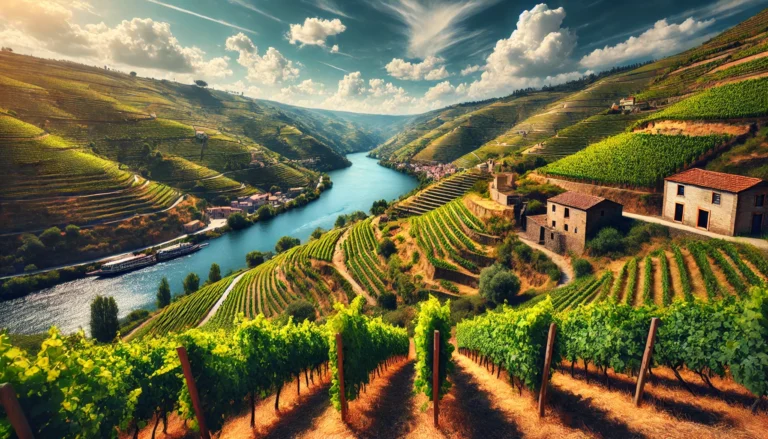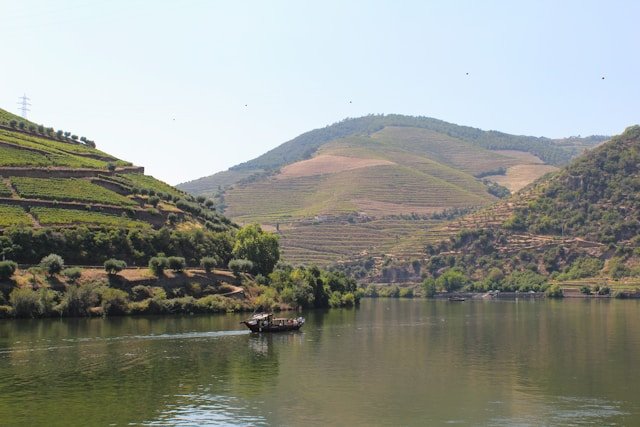
Let’s start right away because there is a lot to discover.
Portuguese wine history – a brief paragraph.
Portugal’s winemaking tradition stretches back thousands of years, making it one of the world’s oldest wine-producing nations. Known for blending innovation with respect for tradition, it has left a lasting imprint on global wine culture—most famously through Madeira and Port. Already recognized for its high-quality still wines, Portugal continues to cement its place among the world’s top wine producers.
With around 250 indigenous varieties—and more to be discovered—Portugal leads the way in grape diversity.
Wine Fact: Madeira was a favorite of Thomas Jefferson and was used to toast the Declaration of Independence of the United States of America. George Washington, Alexander Hamilton, Benjamin Franklin, and John Adams are also said to have appreciated the qualities of Madeira. The wine was mentioned in Benjamin Franklin’s autobiography.
Portuguese wine regions: A small country with 14 different regions
Vinho Verde Region
The Vinho Verde region is diverse and versatile in wine styles and profiles, known for producing not only light and fresh wines but also mineral, complex, and structured wines. Situated in the verdant northwest of Portugal, Vinho Verde stands out for its aromatic whites and crisp acidity. The region excels in crafting wines from iconic grape varieties such as Alvarinho, Loureiro, and Trajadura.
Subregions like Monção e Melgaço and Lima are particularly noteworthy.
Must-Try Wines
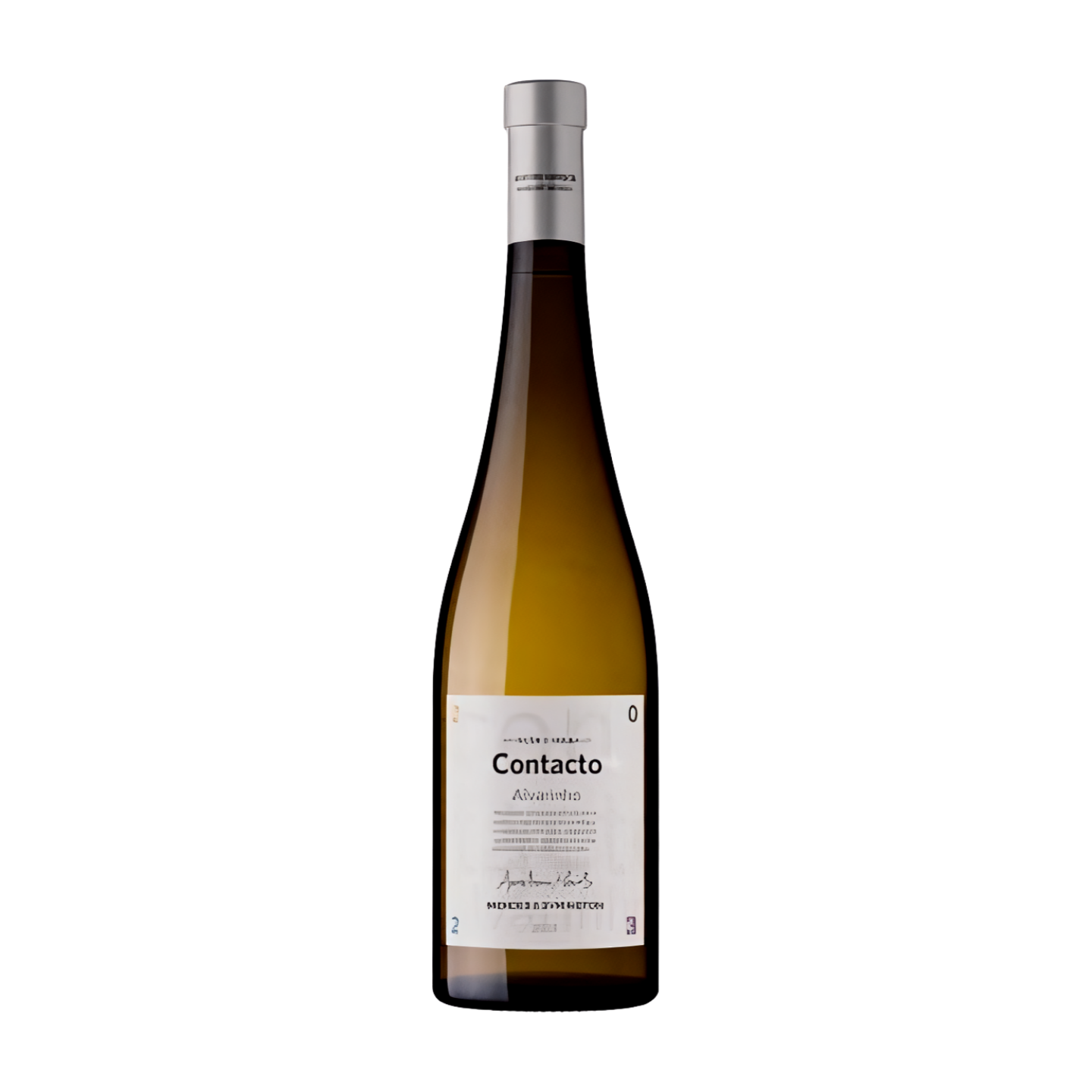
Mendes & Symington Contacto Alvarinho 2023 – Vinho Verde DOC
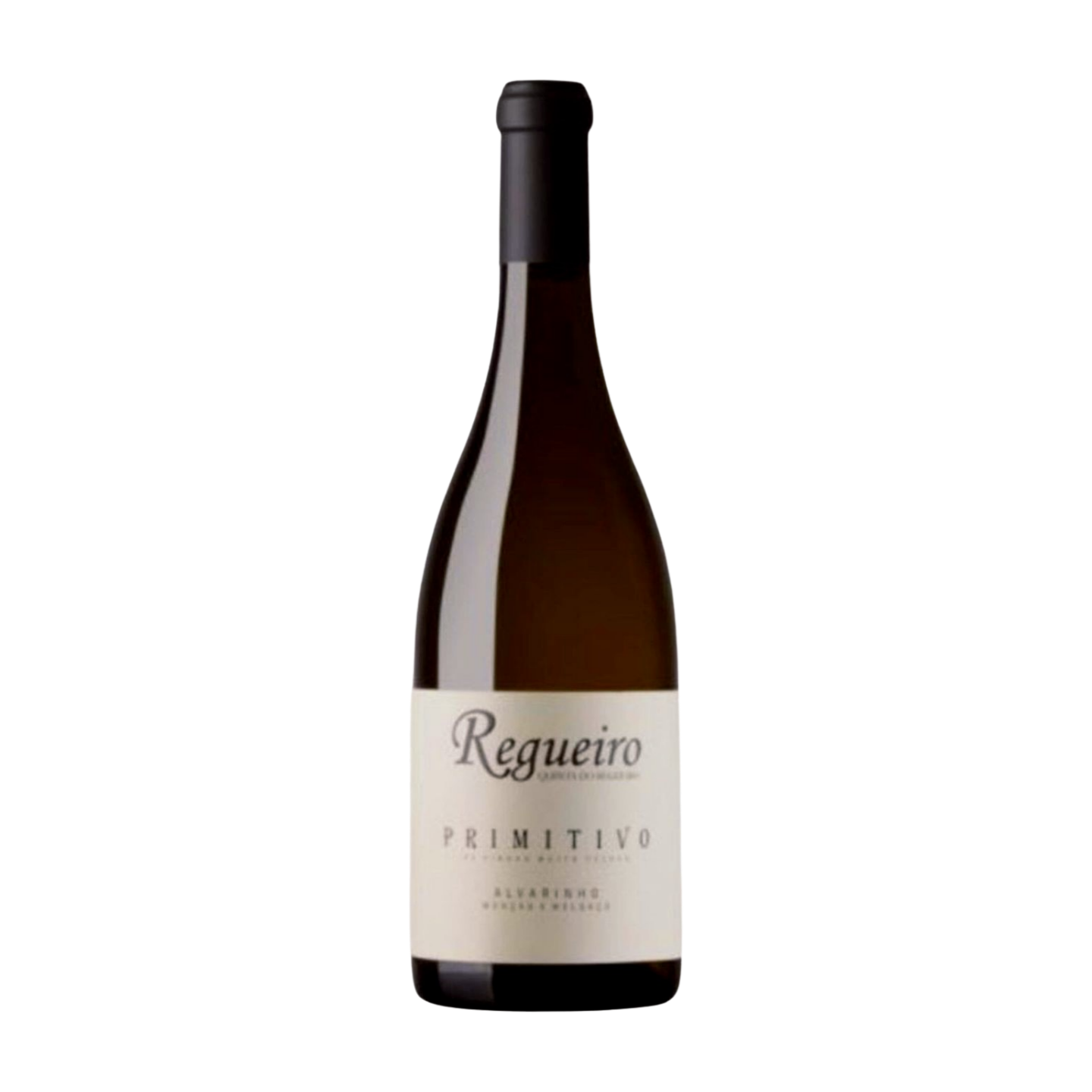
Quinta do Regueiro Primitivo Alvarinho 2020 – Vinho Verde DOC
Douro Region
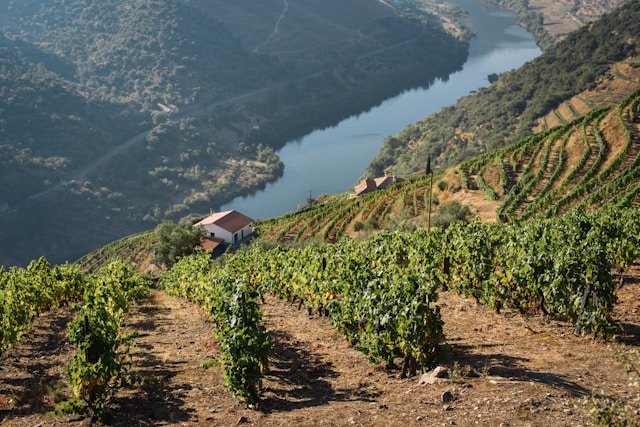
The Douro Valley, a UNESCO World Heritage site, is the birthplace of the iconic Port wine. Beyond Port, the region produces exceptional wines. Subregions such as Baixo Corgo, Cima Corgo, and Douro Superior add to its renown.
Recommended Wines: Highlight complex red blends, iconic single-varietals, and crisp white wines from this storied region to cater to diverse palates.
Douro Red Wines
The Douro Valley is one of Portugal’s most iconic wine regions, home to the world-famous Port wine, which serves as an ambassador for Portuguese wines on the global stage. This celebrated fortified wine originates from the rugged, steep slopes along the Douro River, a landscape recognized as a UNESCO World Heritage Site since 2001.
Beyond Port, the Douro has gained increasing recognition for its exceptional red and white table wines. The vineyards, which span from the riverbanks to the peaks of deep valleys, thrive across three subregions: Baixo Corgo to the west, Cima Corgo in the center, and Douro Superior to the east.
Douro Grape Varieties
The Douro also offers exceptional white wines waiting to be discovered. These are typically made from a blend of grape varieties such as Malvasia Fina, Viosinho, Gouveio, and Rabigato, producing dry wines with remarkable elegance and freshness.
The Douro’s grape varieties are steeped in history, with some tracing back to the Middle Ages and the Order of Cister. While these varieties are not known for high yields, their quality is unmatched.
- Red Grapes: The primary varieties for producing both Douro and Port wines include Touriga Nacional, Touriga Franca, Tinta Barroca, Tinta Roriz (Aragonez), and Tinto Cão. Additionally, other significant varieties such as Trincadeira and Souzão are increasingly cultivated.
- White Grapes: White wine production is supported by varieties like Malvasia Fina, Gouveio, Rabigato, and Viosinho. For Moscatel wines, the region relies on Moscatel Galego.
Douro Wine Styles
Port Wine
The signature wine of the Douro, Port is fortified with aguardente, a practice that began to ensure the wine’s stability during long sea voyages, particularly to meet the sweet preferences of the English market.
Red Wine
Known for their full-bodied nature, rich tannins, and aromas of dark fruits, Douro reds offer remarkable complexity.
White Wine
Fresh and vibrant, Douro whites are typically aromatic and structured.
Moscatel Wine
Produced from Moscatel Galego, these wines are sweet, aromatic, and perfect for dessert pairings.
Must-Try Wines
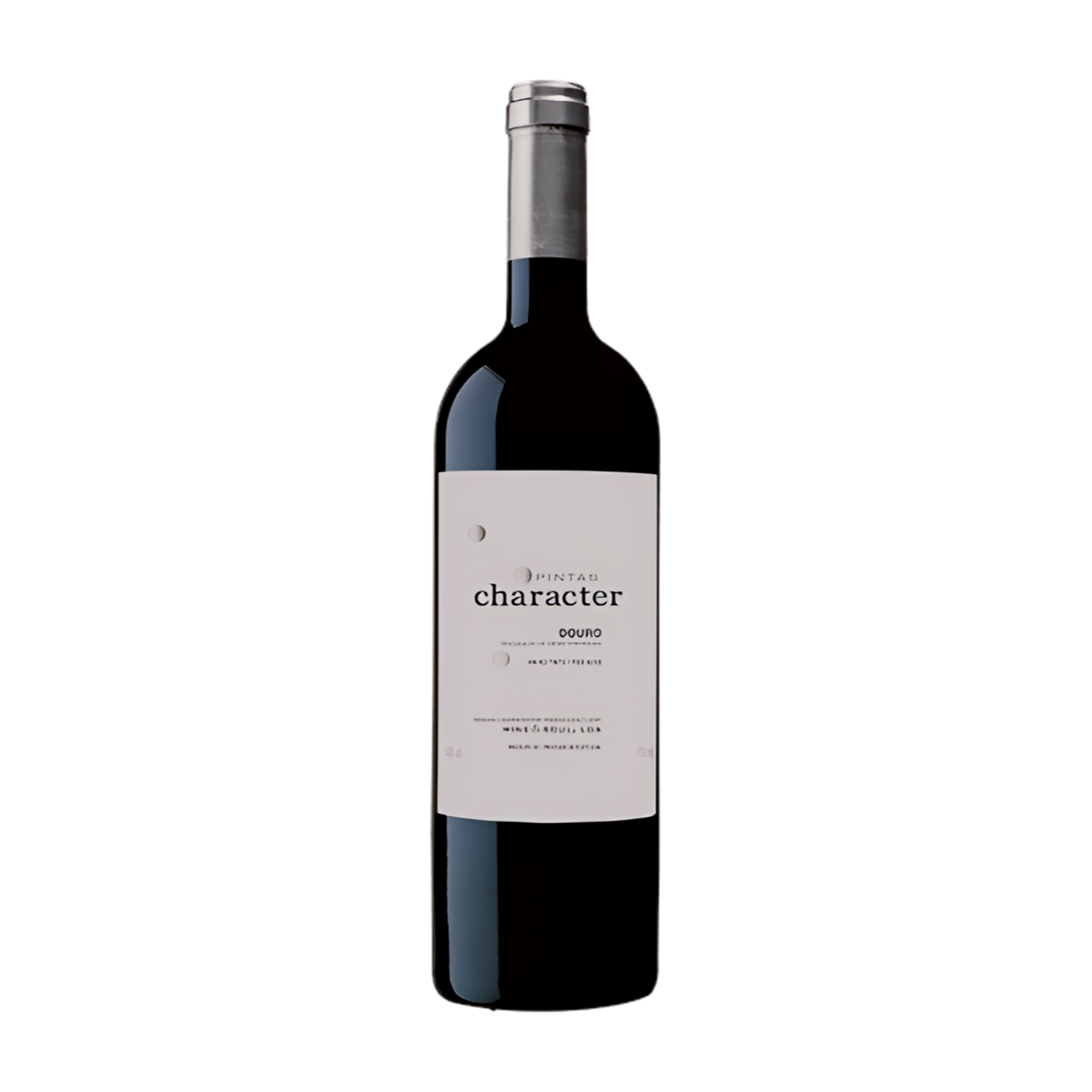
Wine&Soul Pintas Character 2020 Red Wine – Douro DOC
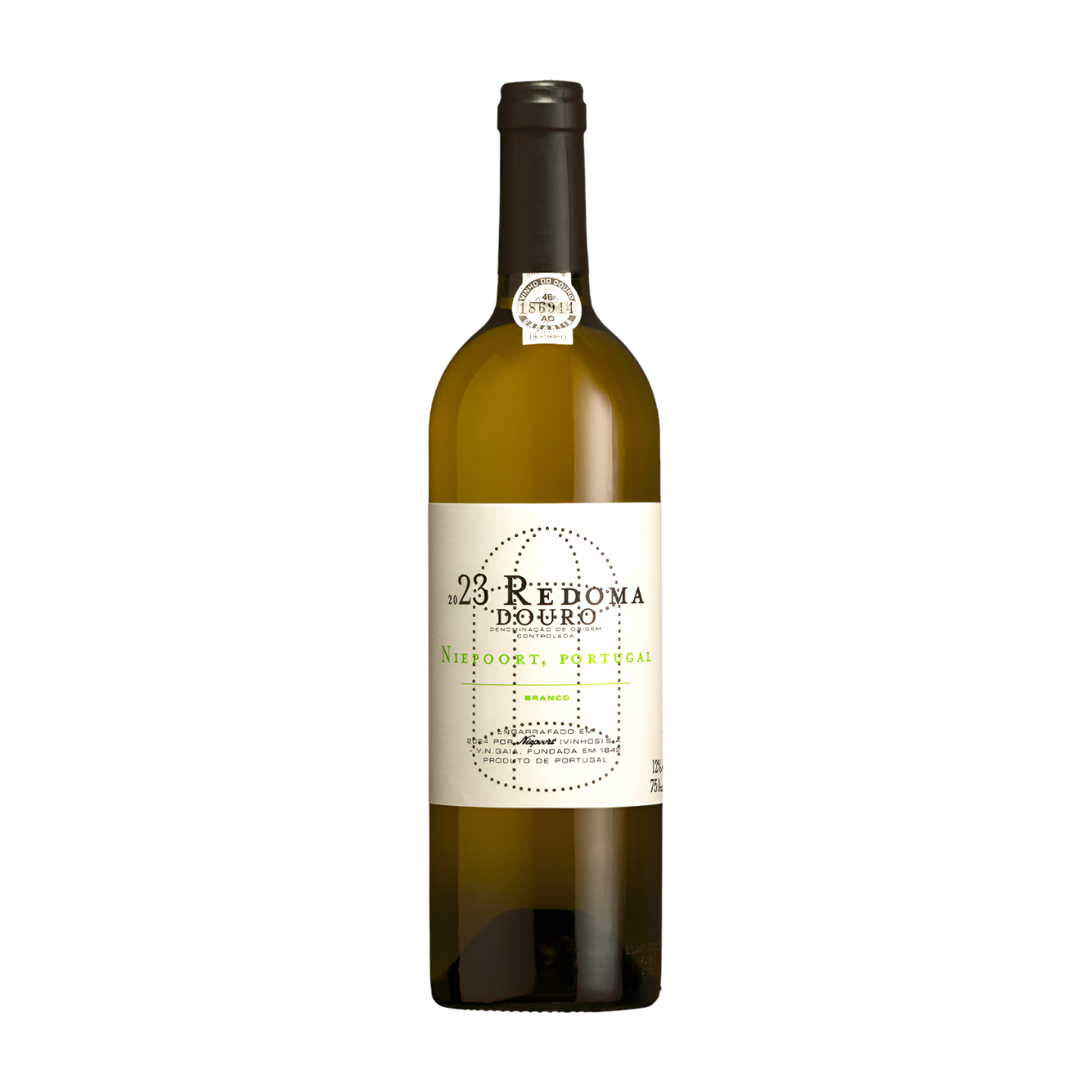
Niepoort Redoma 2023 White Wine – Douro DOC
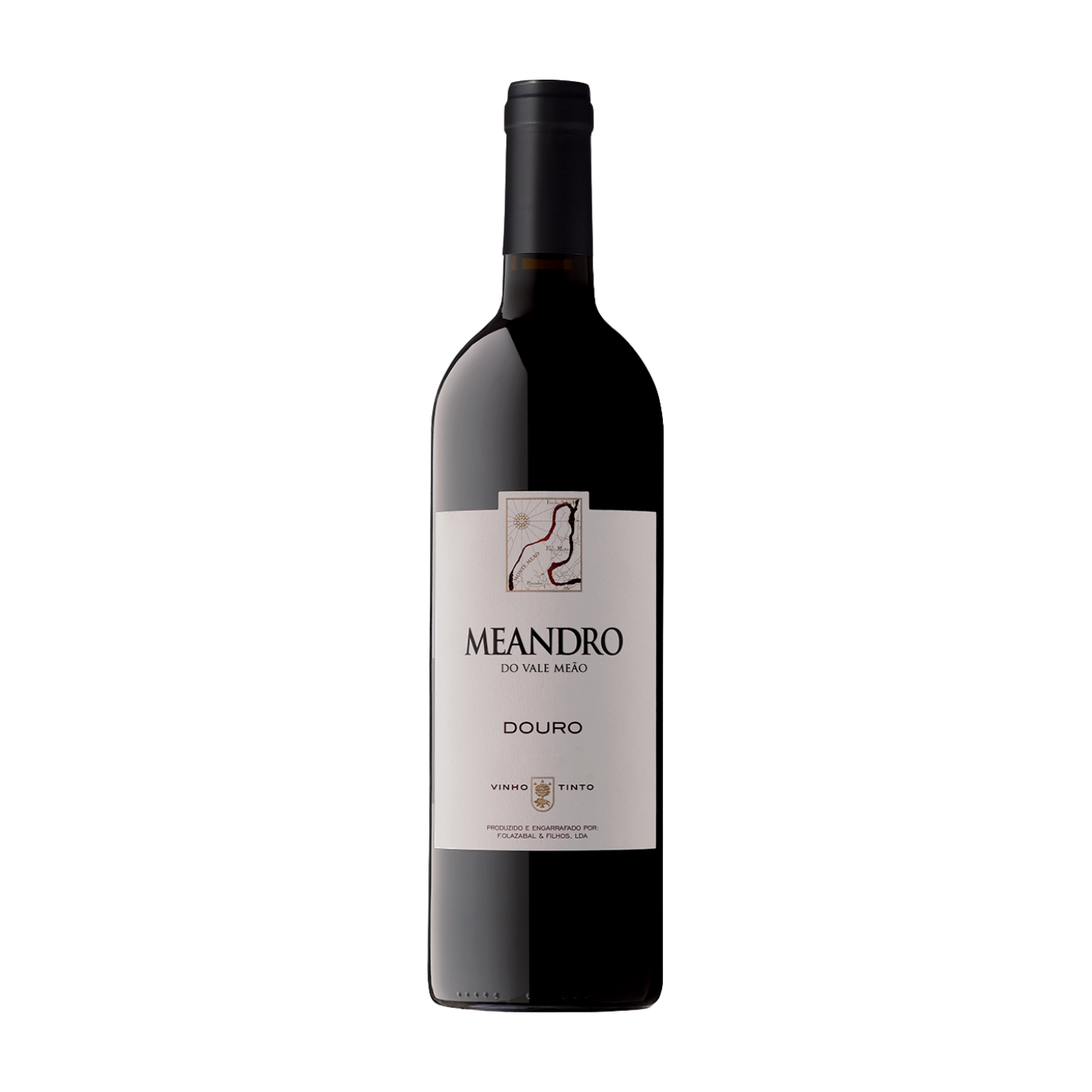
Meandro 2021 Red Wine – Douro DOC
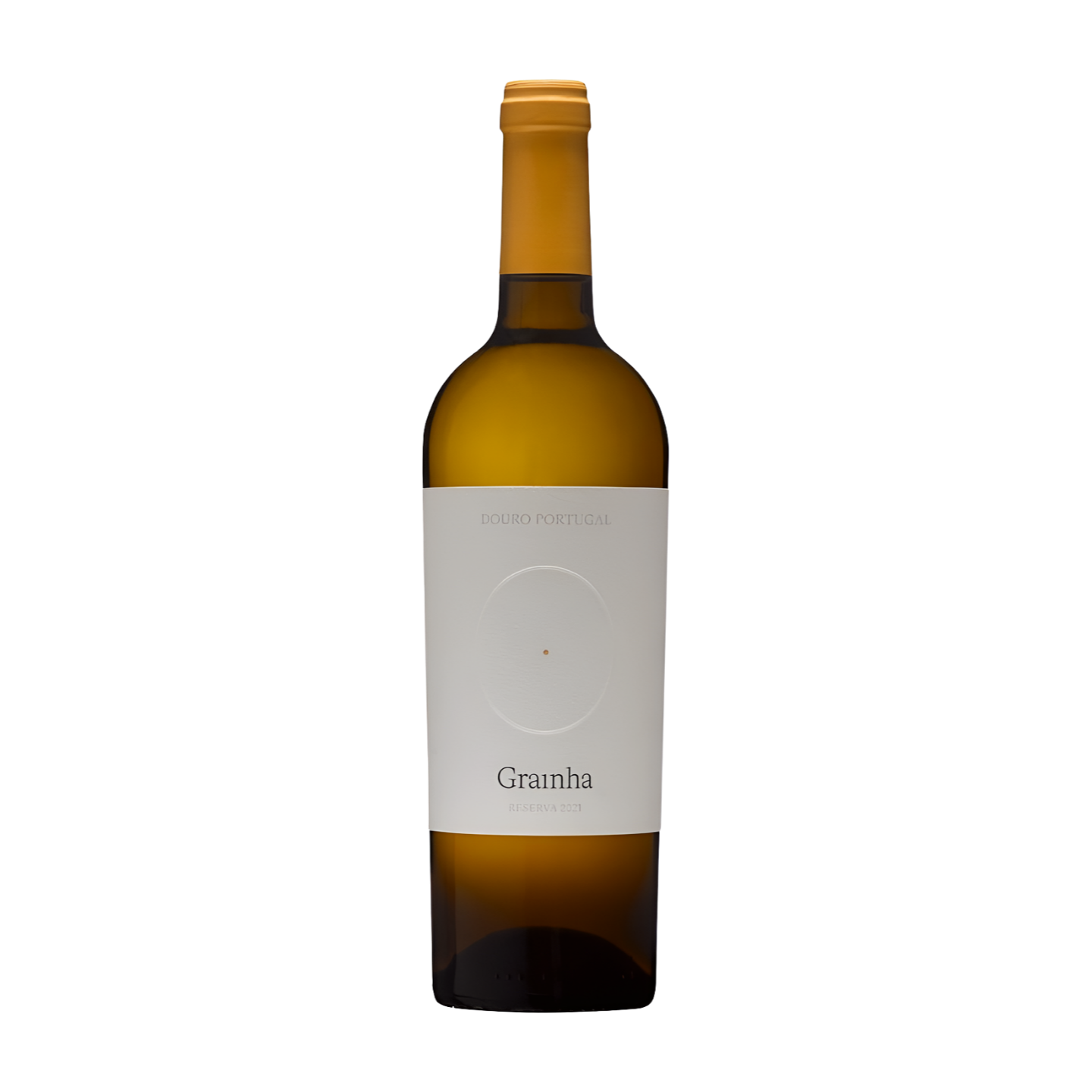
Grainha Reserva 2023 White Wine – Douro DOC
Discover the best Douro wines by price range here.
Trás-os-Montes Region
In the far northeast of Portugal, north of the Douro region, lies the Trás-os-Montes wine region, which is divided into three subregions: Chaves, Valpaços, and Planalto Mirandês. The grape varieties planted are largely consistent across these subregions.
Red Grapes: Key varieties include Trincadeira, Bastardo, Marufo, Tinta Roriz, Touriga Nacional, and Touriga Franca, producing red wines that are typically fruity with a slight astringency.
White Grapes: Prominent white varieties such as Síria, Fernão Pires, Gouveio, Malvasia Fina, Rabigato, and Viosinho create white wines known for their softness and floral aromas.
Unique Features: The region’s rugged landscape and distinct subregional differences contribute to wines with notable character and individuality.
Featured Wines: Include Trás-os-Montes reds for their fruit-forward profiles and floral whites to appeal to those seeking aromatic, smooth wines.
Dão Region
Located in a mountainous area with granite soils, Dão is known for its balanced and elegant wines. Subregions include Serra da Estrela, Silgueiros, and Terras de Azurara.
- Red Grapes: Touriga Nacional, Alfrocheiro, Jaen.
- White Grapes: Encruzado, Bical.
Featured Wines: Age-worthy reds with complex tannins and aromatic whites with excellent aging potential.
Bairrada Region
Situated near the Atlantic, Bairrada’s wines are shaped by its maritime climate. Subregions include Anadia and Cantanhede.
- Red Grapes: Baga, Touriga Nacional.
- White Grapes: Arinto, Bical.
Sparkling Wines: Renowned for high-quality sparkling wines.
Featured Wines: Add sparkling wines and bold reds to your collection for variety.
Távora-Varosa Region
Located north of the Beiras region and bordering the Douro, Távora-Varosa is a small but significant Denomination of Origin, particularly renowned for its sparkling wines. The region’s cool climate and granitic soils provide the ideal conditions for producing high-quality sparkling wines.
- White Grapes: Predominantly planted, the key varieties include Malvasia Fina, Cerceal, Gouveio, and Chardonnay, which contribute to the crispness and elegance of the region’s sparkling wines.
- Red Grapes: Notable red varieties include Touriga Francesa, Tinta Barroca, Touriga Nacional, Tinta Roriz, and Pinot Noir, used in both sparkling and still wines.
- Wine Styles: While sparkling wines dominate production, the region also produces fresh whites and smooth reds, offering a variety of styles for different preferences.
Must-Try Wines
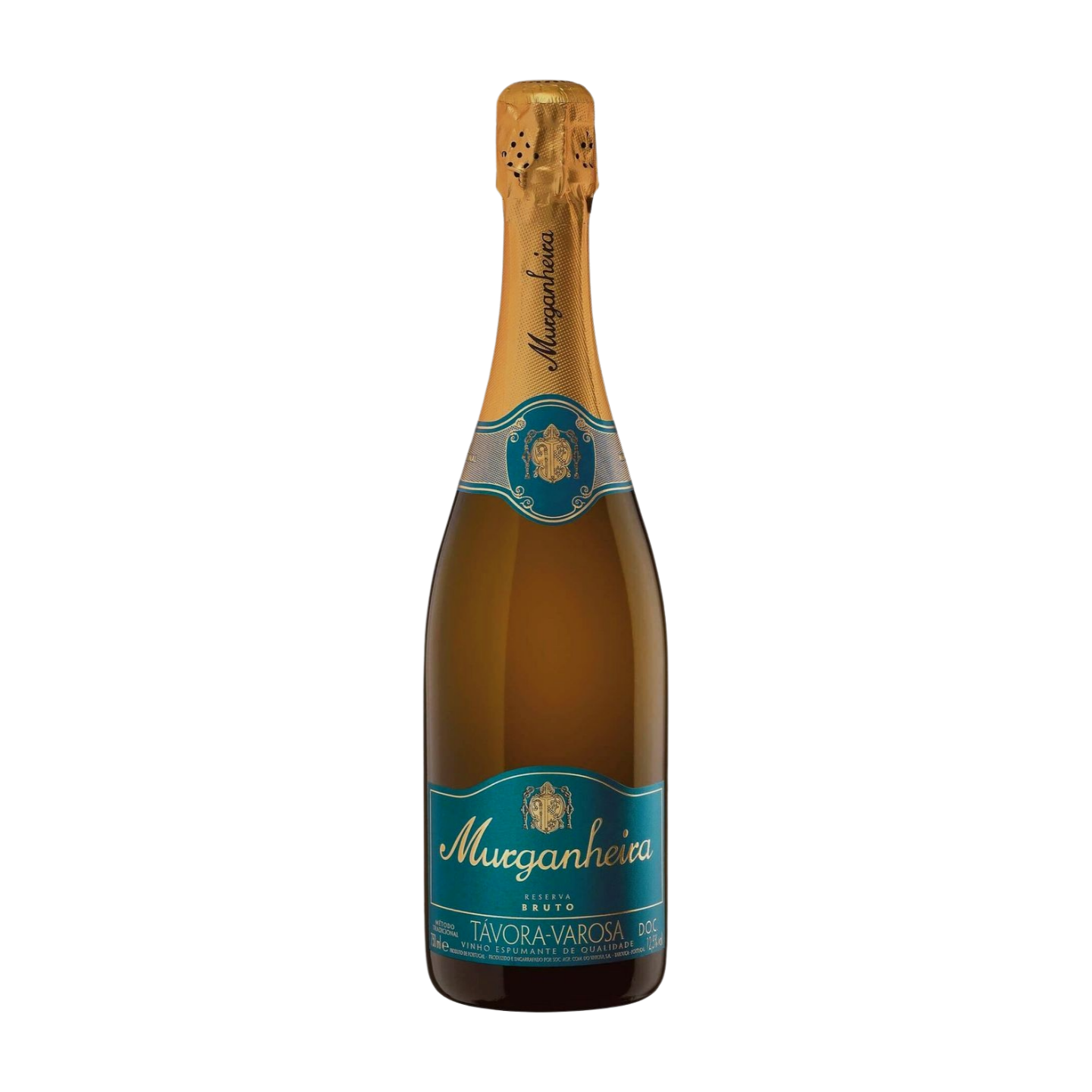
Murganheira Reserva Brut Sparkling Wine – Távora-Varosa DOC

Murganheira Vintage Brut Sparkling Wine – Távora-Varosa DOC
Beira Interior Region
The mountainous Beira Interior region is divided into Cova da Beira, Castelo Rodrigo, and Pinhel subregions.
- Red Grapes: Rufete, Jaen, Tinta Roriz.
- White Grapes: Fonte Cal, Síria, Arinto.
Featured Wines: Highlight aromatic whites and elegant reds that showcase the region’s high-altitude terroirs.
Alentejo Region
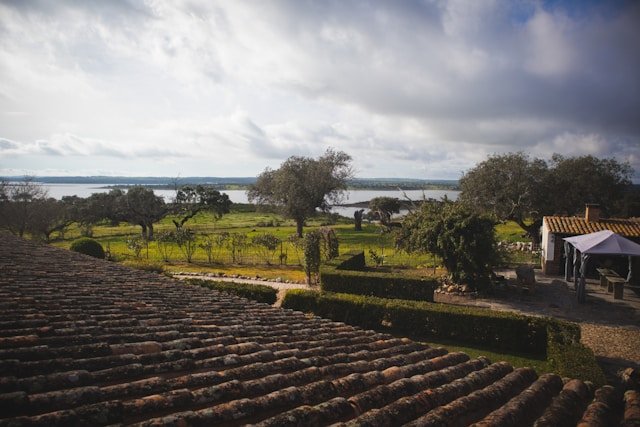
The Alentejo is one of Portugal’s largest and most iconic wine regions, characterized by its vast plains interrupted by gentle hills. Its warm Mediterranean climate and varied terroirs make it a powerhouse for wine production, offering both DOC Alentejo wines and a diverse array of regional wines.
Key Grape Varieties
- White Grapes: The most significant white varieties in the region include Roupeiro, Antão Vaz, and Arinto, known for their ability to produce smooth wines with tropical fruit aromas and a hint of acidity.
- Red Grapes: Among red varieties, Trincadeira, Aragonez (Tinta Roriz), Castelão, and Alicante Bouschet—a French grape that thrives in Alentejo’s climate—are the most notable.
Wine Styles:
- White DOC Alentejo Wines: These are typically smooth, slightly acidic, and aromatic, with tropical fruit notes.
- Red DOC Alentejo Wines: Full-bodied with rich tannins and aromas of wild berries and red fruits.
- Regional Wines: Alentejo’s regional wines often include international varieties like Touriga Nacional, Cabernet Sauvignon, Syrah, and Chardonnay, offering producers greater flexibility and innovation.
Subregions:
The Alentejo is divided into several DOC subregions, including Borba, Évora, Reguengos, Redondo, Granja-Amareleja, Portalegre, Vidigueira, and Moura, each contributing unique characteristics to the wines.
Must-Try Wines
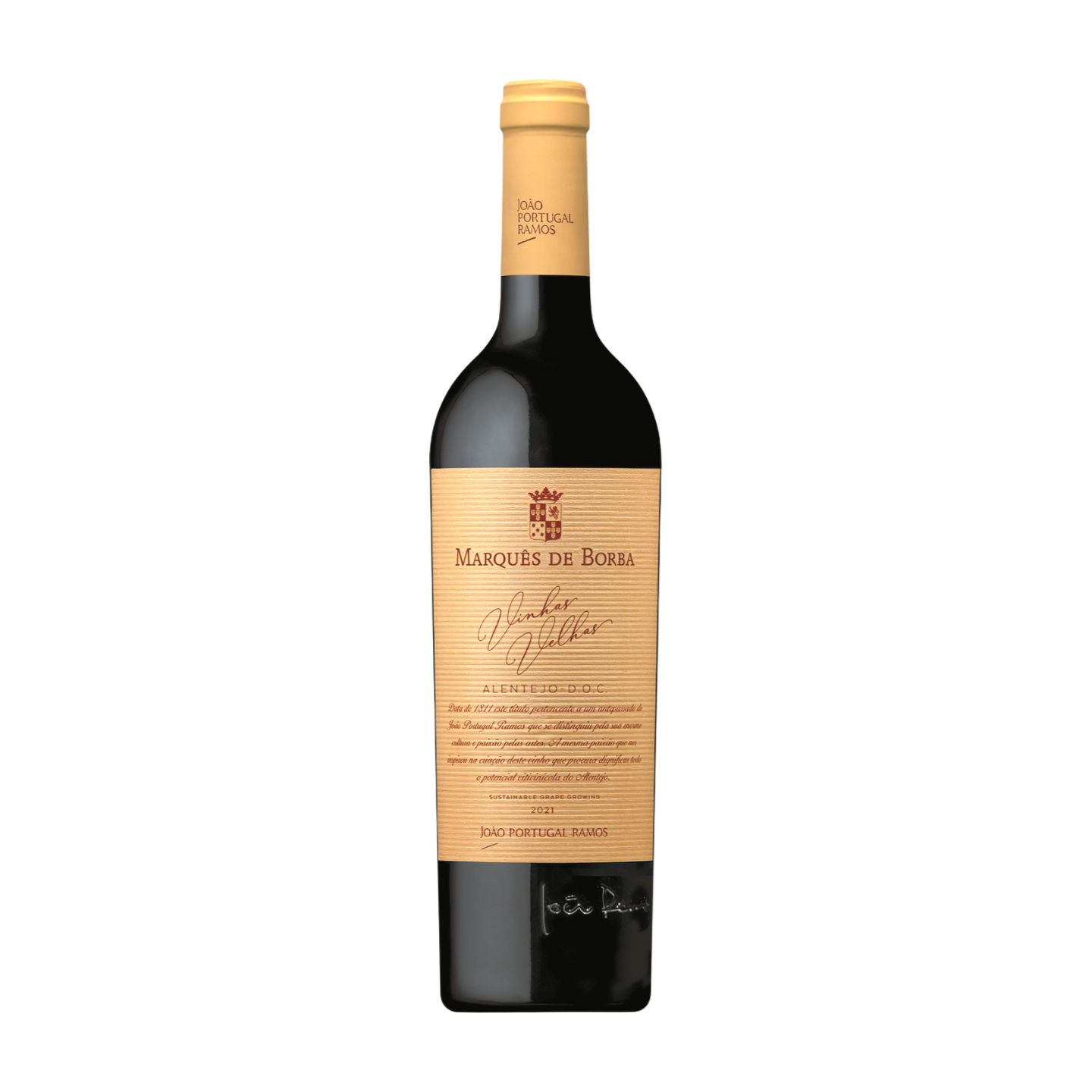
Marquês de Borba Vinhas Velhas 2021 Red Wine – Alentejo DOC
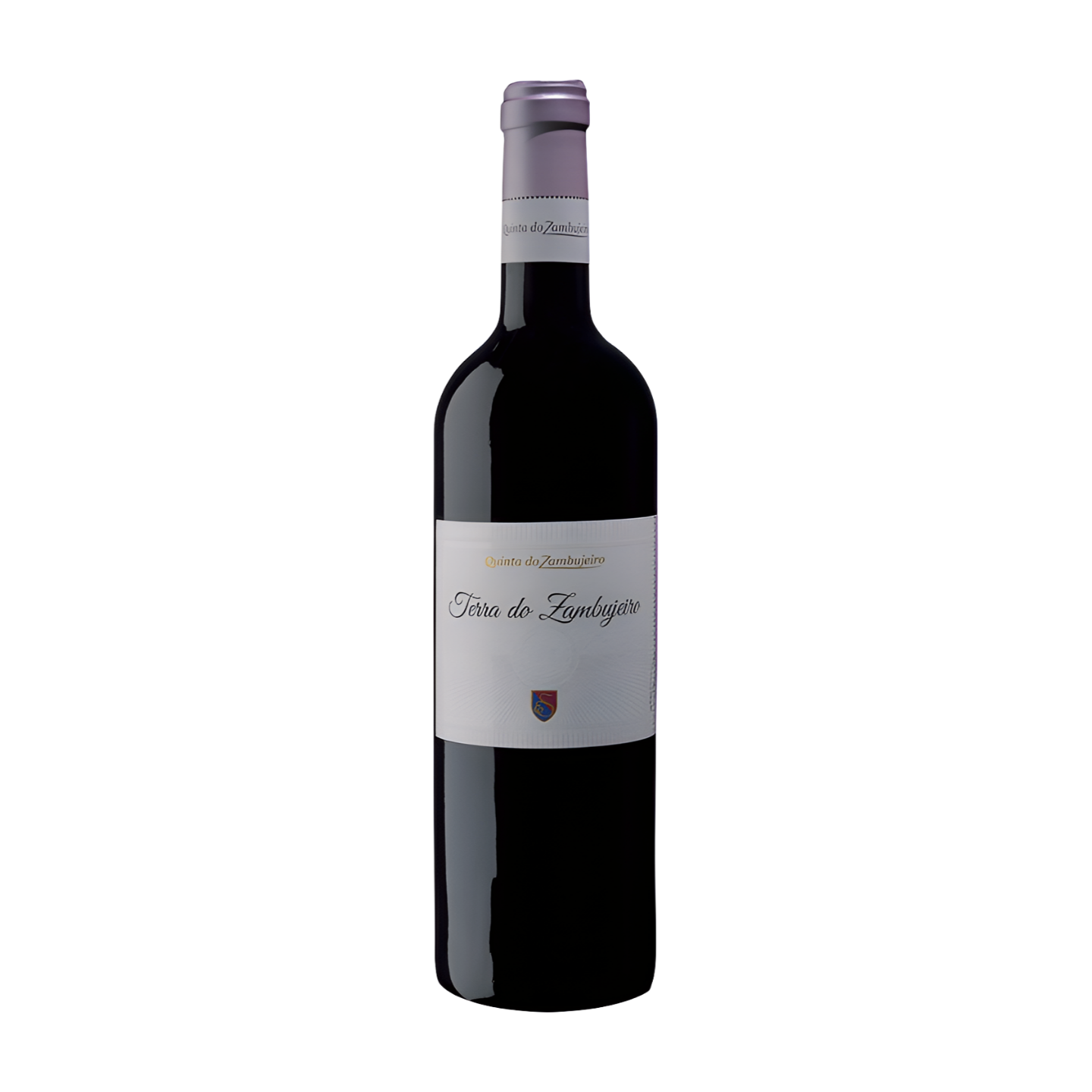
Terra do Zambujeiro Red Wine 2018 – Alentejo DOC
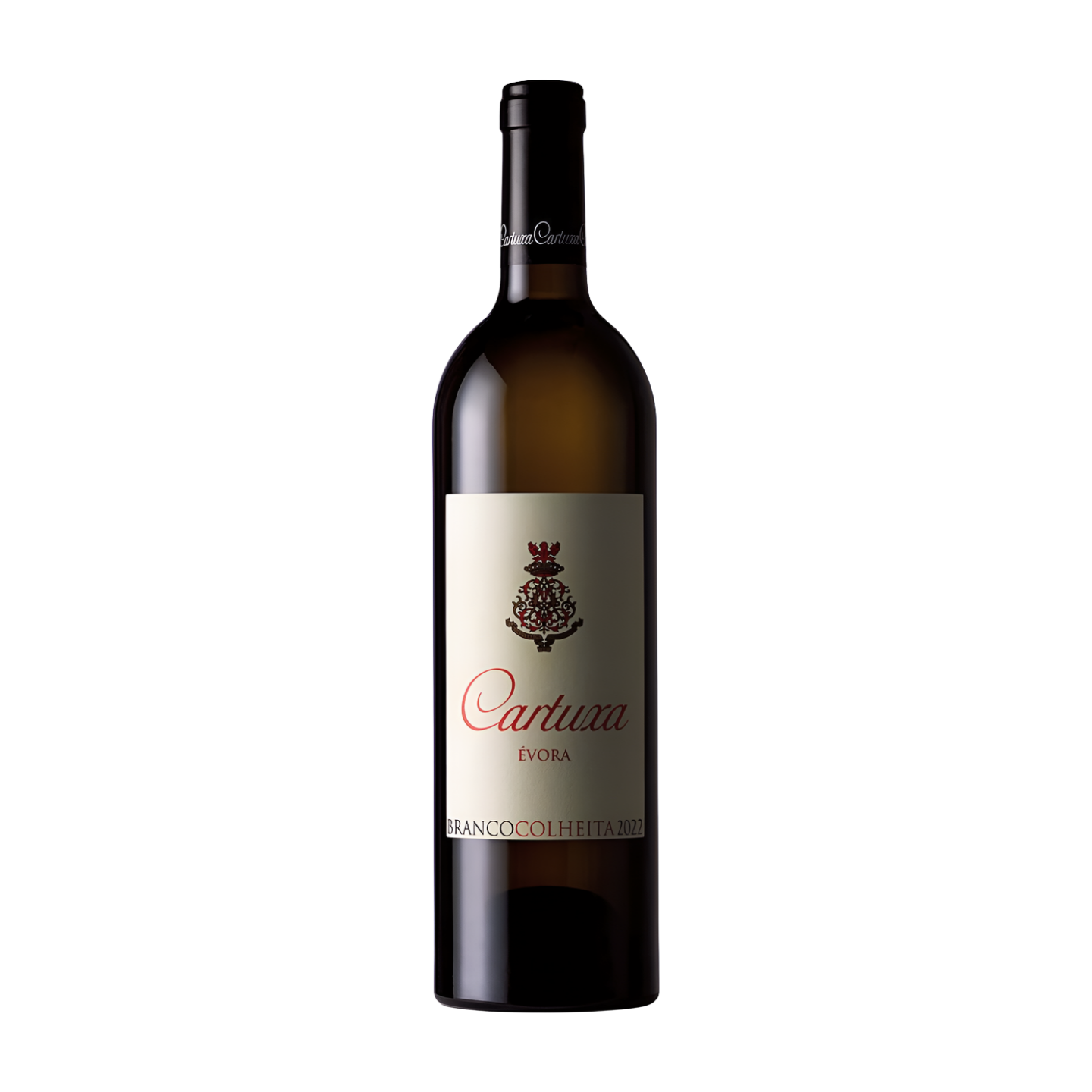
Cartuxa 2022 White Wine – Alentejo DOC
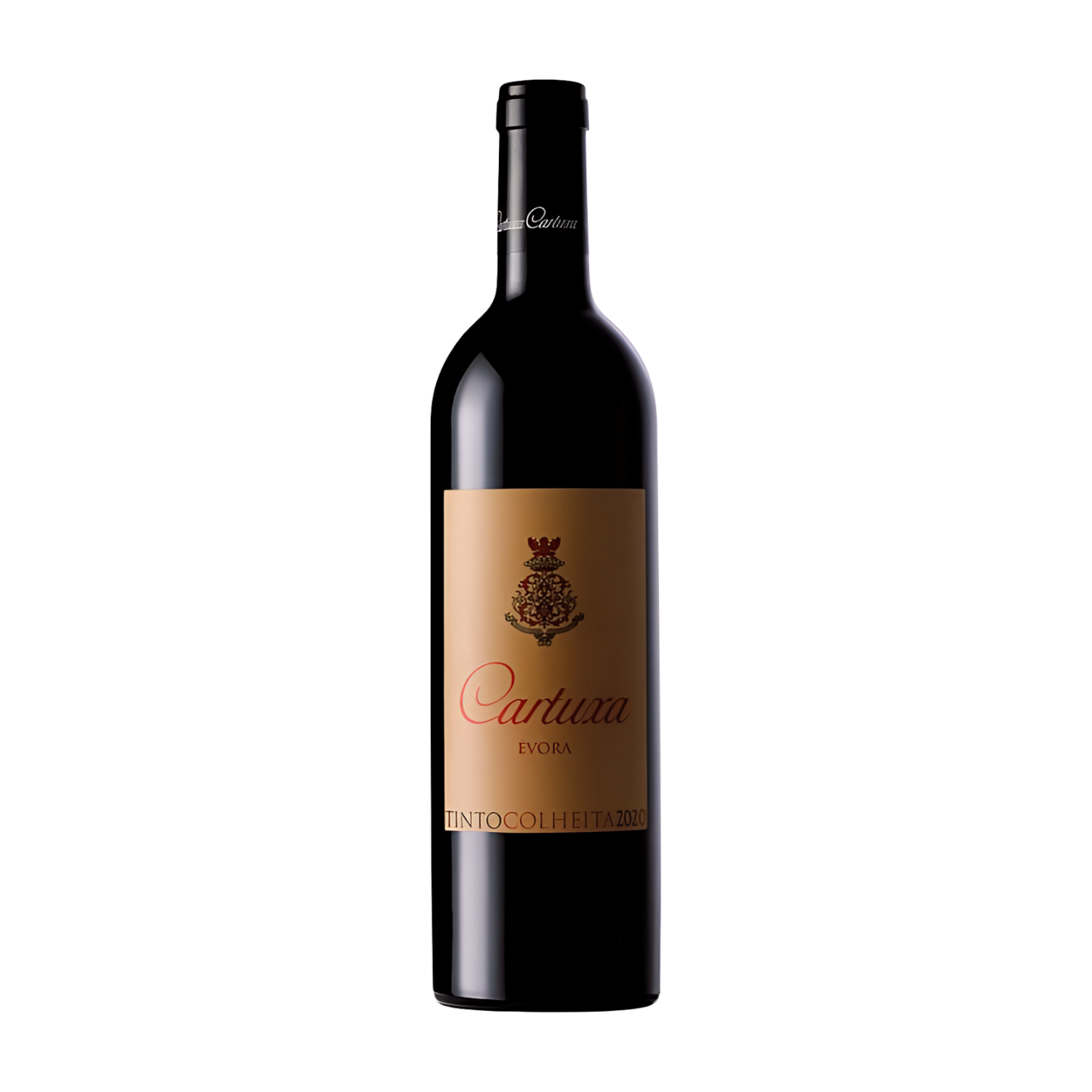
Cartuxa 2020 Red Wine – Alentejo DOC
With its rich diversity, Alentejo is a must-explore region for wine lovers of all tastes.
Tejo Region
The Tejo region, also known as Ribatejo, is located along the fertile banks of the Tagus River and is one of Portugal’s most productive wine areas. With a mix of traditional and modern winemaking, the region offers both DOC Tejo and Regional Tejo wines that capture its unique terroir.
Key Grape Varieties
- Red Grapes: DOC Tejo reds are crafted from both traditional varieties like Trincadeira and Castelão and noble varieties such as Touriga Nacional, Cabernet Sauvignon, and Merlot. These wines are typically young, aromatic, and have soft tannins.
- White Grapes: The most planted white variety is Fernão Pires, essential in producing fruity and floral white wines. It is often blended with other local varieties such as Arinto, Tália, Trincadeira das Pratas, and Vital, as well as the international Chardonnay, to create vibrant and tropical wines.
Wine Styles:
- DOC Tejo Wines: Reflect the region’s rich traditions, with fruity whites and aromatic reds that showcase its distinct terroir.
- Regional Tejo Wines: Allow for more experimentation, incorporating non-DOC-approved grape varieties to produce innovative and original wines.
Key Characteristics:
The Ribatejo’s terroir is evident in both its DOC and Regional wines. The whites are characterized by their tropical and floral aromas, while the reds are known for their youthful vibrancy and soft tannins.
Featured Wines:
- Include aromatic Fernão Pires whites and versatile red blends for approachable yet high-quality options.
- Showcase Regional Tejo wines for customers interested in innovative and unique styles.
With its fertile soils, ideal climate, and a balance of tradition and innovation, Tejo offers a wine for every palate.
Lisboa Region
The Lisboa wine region, with a long history of viticulture, offers one of the most diverse wine portfolios in Portugal. Its varied landscapes, ranging from coastal zones to protected inland areas, create numerous microclimates that allow for the cultivation of both traditional Portuguese grapes and internationally renowned varieties. This diversity is reflected in the high-quality wines produced across its nine subregions.
Key Grape Varieties
- Red Grapes: Traditional varieties like Castelão, Aragonez (Tinta Roriz), Touriga Nacional, Tinta Miúda, and Trincadeira form the backbone of Lisboa’s red wines. These are often blended with international grapes such as Alicante Bouschet, Cabernet Sauvignon, and Syrah, resulting in complex, full-bodied wines.
- White Grapes: Lisboa’s whites are crafted from Arinto, Fernão Pires, Seara-Nova, and Vital, with Chardonnay also making notable contributions in some areas. These grapes produce wines known for their freshness and citrus character.
Wine Styles
Lisbon Red Wines:
Aromatic, elegant, and tannin-rich, with the potential for bottle aging.
Lisbon White Wines:
Fresh, citrusy, and aromatic, with excellent food-pairing versatility.
Lisbon Fortified Wines:
The region also produces unique fortified wines, such as those from Colares and Carcavelos, known for their historical significance and unique profiles.
Lisboa’s combination of tradition and innovation, paired with its diverse terroirs, makes it an essential region for wine enthusiasts. Whether you seek approachable whites, complex reds, or unique fortified wines, Lisboa has something to offer.
Península de Setúbal Region
The Península de Setúbal is a dynamic wine region south of Lisbon, comprising two Denominations of Origin: Palmela and Setúbal, as well as the designation for regional wines, Península de Setúbal. Renowned for its diversity, the region excels in producing both dry table wines and some of the world’s most iconic fortified wines.
Key Grape Varieties
- Red Grapes: The traditional red variety, Castelão, dominates the region and is required in high percentages for DOC wines. For instance, Palmela DOC mandates that at least 66.7% of the wine must be Castelão. This grape is often blended with Alfrocheiro and Trincadeira to enhance complexity.
- White Grapes: The dominant white varieties include Fernão Pires, Arinto, and the region’s signature grape, Moscatel de Setúbal, used in both dry whites and the famed fortified wines.
Wine Styles
Península de Setúbal White Wines
Characterized by floral aromas and refreshing acidity.
Península de Setúbal Red Wines
Smooth flavors of spices and wild berries, with excellent balance and elegance.
Moscatel de Setúbal
One of the world’s oldest and most celebrated wines, it offers an intense aroma of orange blossom, honeyed sweetness, and a full-bodied palate. With age, it develops complex notes of dried fruits, raisins, and coffee.
Moscatel Roxo
A rarer and more refined variant of Moscatel, featuring complex aromas and flavors of bitter orange, raisins, figs, and hazelnuts.
Must-Try Wines
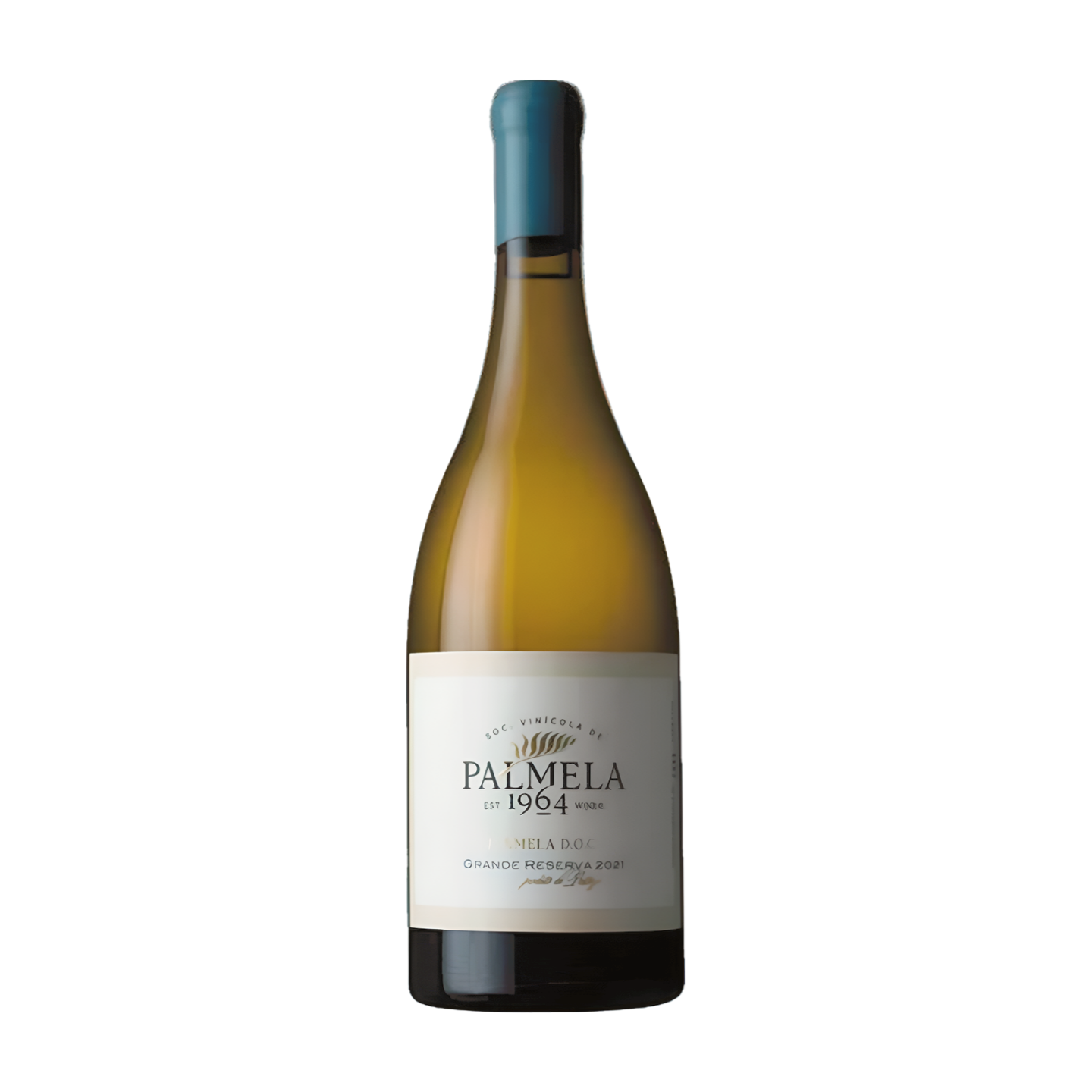
SVP Grande Reserva 2021 White Wine – Península de Setúbal DOC
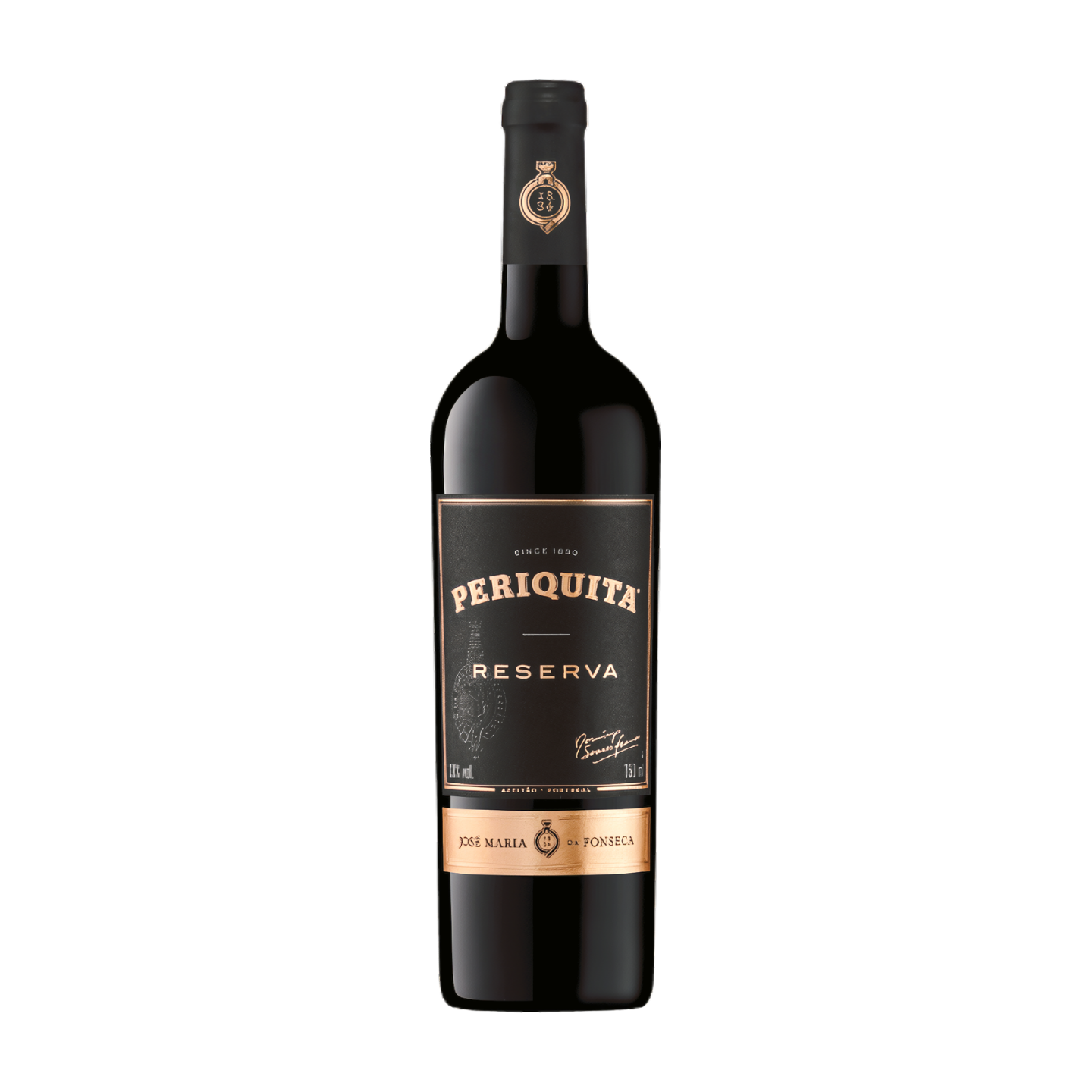
Periquita Reserva 2021 Red Wine – Península de Setúbal DOC
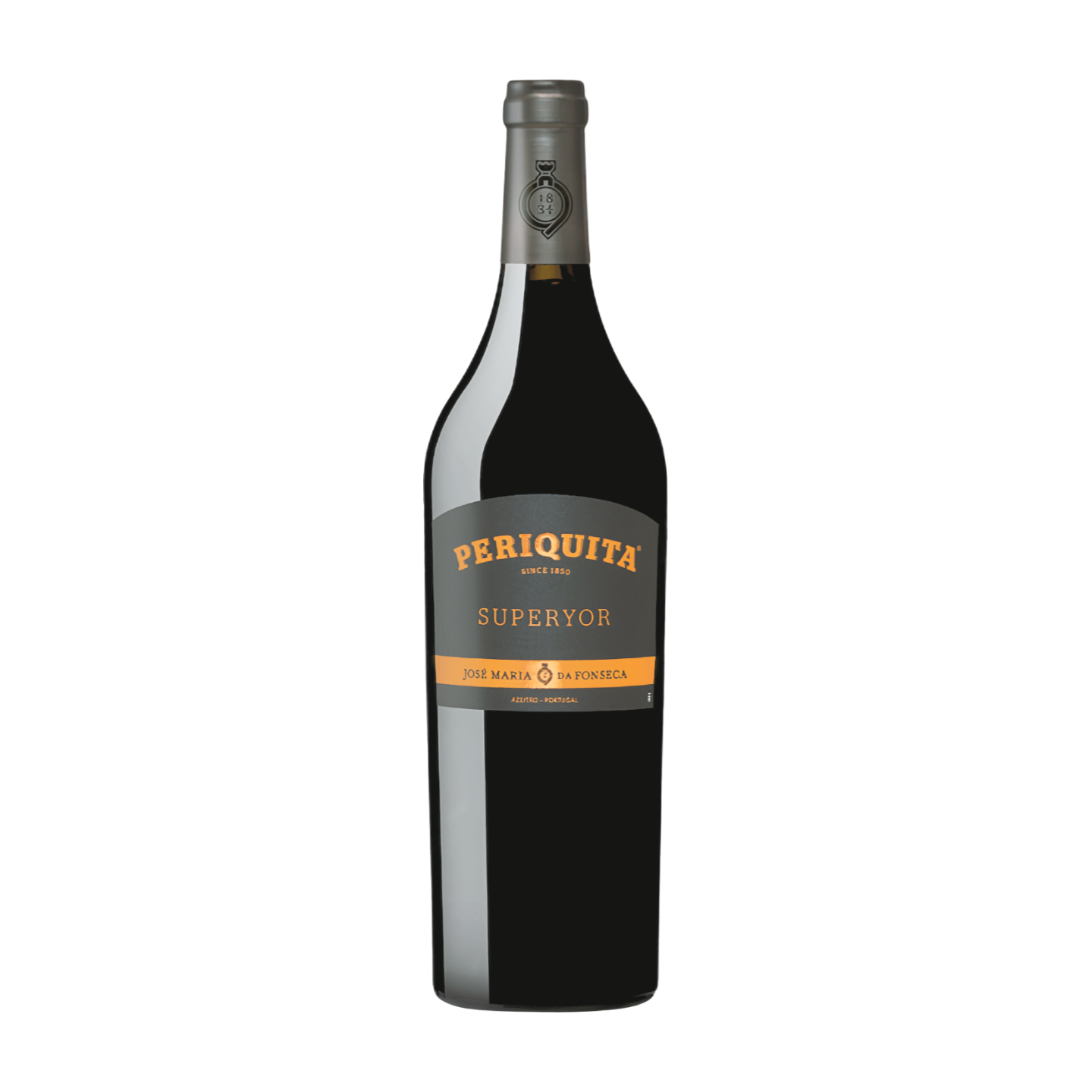
Periquita Superyor 2017 Red Wine – Península de Setúbal DOC
Algarve Region
The Algarve region, located in the sunny south of Portugal, is characterized by its warm Mediterranean climate and stunning landscapes. Known for its approachable and fruit-forward wines, the Algarve is home to four Denominations of Origin (DOC): Lagos, Lagoa, Portimão, and Tavira. However, most of the region’s wine production falls under the designation “Vinho Regional do Algarve.”
Key Grape Varieties
Red Grapes:
- Castelão: A traditional variety known for its soft tannins and ripe red fruit flavors.
- Negra Mole: Unique to the Algarve, it produces light, fruity reds with a distinctive regional character.
- Syrah: Introduced during vineyard replanting, Syrah has adapted exceptionally well to the Algarve’s climate, now playing a significant role in regional wine production.
White Grapes:
- Arinto: Offers crisp acidity and citrusy freshness.
- Síria: Known for its delicate floral and fruity notes.
Wine Styles
Algarve Red Wines
Soft, fruit-forward, and easy-drinking, often showcasing flavors of ripe berries and subtle spice.
Algarve White Wines
Fresh and aromatic, with lively citrus and floral profiles.
Algarve Rosé Wines
Fruity and refreshing, it is ideal for enjoying the Algarve’s warm climate.
Featured Wines
- Red Wines: Highlight Syrah-based blends and Castelão-dominant wines for their rich fruit flavors and soft structure.
- White Wines: Showcase crisp Arinto and aromatic Síria wines for their refreshing qualities.
- Rosés: Offer vibrant, easy-drinking rosés, perfect for summer occasions.
Madeira Region
The Madeira wine region is globally celebrated for its fortified wines, but it also produces exceptional still wines that are steadily gaining recognition. With its unique volcanic terroir, Mediterranean climate, and centuries-old winemaking heritage, Madeira offers a diverse range of wines that showcase the island’s extraordinary potential.
Key Grape Varieties
- Fortified Wines:
- Tinta Mole: The most widely planted grape, versatile in its use.
- Sercial, Verdelho, Boal (Bual), and Malvasia (Malmsey) are rare and notable varieties that define the different sweetness levels of Madeira fortified wines.
- Still Wines:
- White Grapes: Verdelho, Sercial, and Arnsburger.
- Red Grapes: Tinta Negra, Castelão, and other Portuguese varieties.
Terroir and Climate
- Climate: The mild Mediterranean with low thermal amplitude and high humidity, ideal for both fortified and still wine production.
- Soils: Volcanic, nutrient-poor but rich in minerality, imparting a unique character to the wines.
- Vineyards: Terraced on steep slopes, the best quality wines come from lower-altitude vineyards.
Wine Styles
- Fortified Wines:
- Dry (Sercial): Vibrant acidity, light and refreshing.
- Medium Dry (Verdelho): A balance of freshness and richness.
- Medium Sweet (Boal): Complex and deep with sweeter notes.
- Sweet (Malvasia): Luscious, full-bodied, and age-worthy.
- Still Wines:
- White Wines: Crisp, mineral-driven, with citrus and floral aromas, perfect for seafood and light dishes.
- Red Wines: Light to medium-bodied, featuring red berries, spices, and a refreshing minerality.
The Dual Excellence of Madeira Wines
- Fortified Legacy: Renowned for centuries, Madeira’s fortified wines are among the world’s most age-worthy and complex, evolving beautifully over decades.
- Still Wine Innovation: The growing production of still wines highlights the island’s adaptability and potential to produce distinctive whites and reds that complement its fortified heritage.
Azores Region
The Azores, an archipelago in the middle of the Atlantic Ocean, is a unique and challenging wine region. Known for its volcanic soils and maritime climate, the Azores produce distinctive wines shaped by the natural environment and centuries-old winemaking traditions.
Terroir and Climate
- Volcanic Soils: The nutrient-rich but rugged volcanic soils impart a unique mineral character to the wines.
- Maritime Climate: Mild temperatures throughout the year are offset by high rainfall and humidity. To protect the vines from the salty ocean winds, growers plant them in sheltered areas or within currais—traditional stone walls that act as barriers against harsh maritime conditions.
Denominations of Origin (DOC)
The Azores have three Denominations of Origin, established in 1994, each with its distinctive characteristics:
- Graciosa (Graciosa Island):
- Grapes: Verdelho, Arinto, Terrantez, Boal, Fernão Pires.
- Wine Style: Produces fresh, aromatic white wines with a balance of acidity and minerality.
- Biscoitos (Terceira Island):
- Grapes: Verdelho, Arinto, Terrantez.
- Wine Style: Known for fortified wines that are aromatic, rich, and complex.
- Pico (Pico Island):
- Grapes: Verdelho, Arinto, Terrantez.
- Wine Style: Produces fortified wines known as “Generoso da Ilha do Pico,” considered the best wines of the region. These wines are full-bodied, mineral-driven, and age-worthy.
Still Wines of the Azores
In addition to its famed fortified wines, the Azores are increasingly recognized for their still wines, particularly those from Pico, Terceira, and Graciosa.
Azores White Wines
- Grapes: Verdelho, Arinto (Pedernã), Terrantez do Pico, Boal, Fernão Pires.
- Profile: Fresh and vibrant, with high acidity, pronounced minerality and saline notes reflecting the maritime influence. Citrus, green apple, and floral aromas dominate the palate.
- Pairings: Perfect with seafood, shellfish, and Mediterranean cuisine.
Azores Red Wines:
- Grapes: Negra Mole, a rediscovered variety, is increasingly used for red wine production.
- Profile: Light to medium-bodied, with flavors of red berries, a touch of spice, and a refreshing mineral finish.
- Pairings: Excellent with grilled fish, poultry, or soft cheeses.
The Role of Volcanic Terroir
The volcanic origin of the soils plays a crucial role in shaping the unique profile of Azorean wines. Both still and fortified wines are infused with distinct mineral and saline characteristics that make them exceptionally refreshing and food-friendly.
Wine Styles from the Azores
- Fortified Wines:
- Dry (Sercial): Crisp and vibrant with high acidity.
- Medium Dry (Verdelho): Balanced with richness and freshness.
- Medium Sweet (Boal): Deep and aromatic, with complex sweetness.
- Sweet (Malvasia): Full-bodied, honeyed, and highly age-worthy.
- Still Wines:
- White Wines: Mineral-driven with zesty citrus notes and floral aromas.
- Red Wines: Light, fresh, and elegant, showcasing unique volcanic and maritime influences.
Must-Try Wines
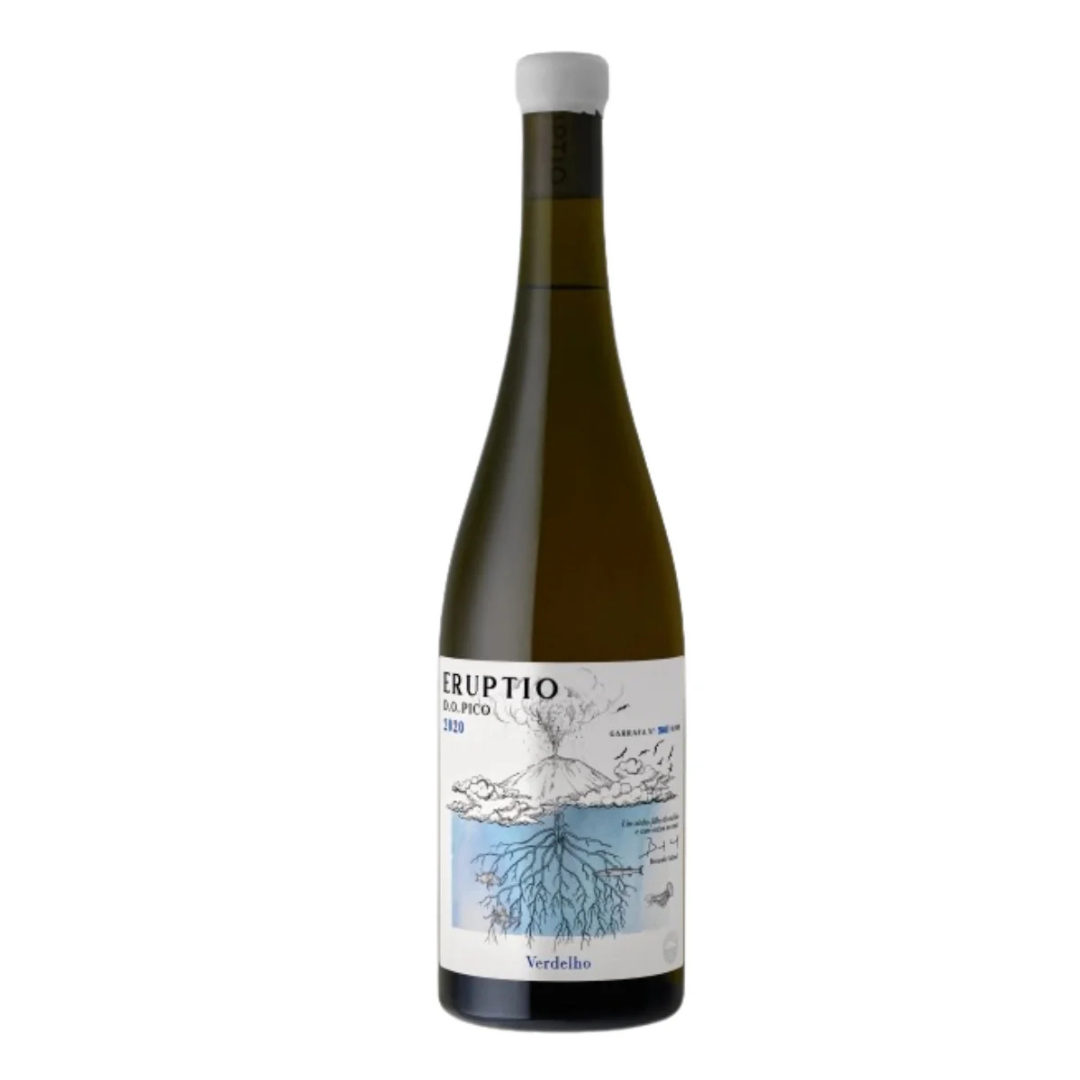
Eruptio Verdelho 2020 White Wine – Azores
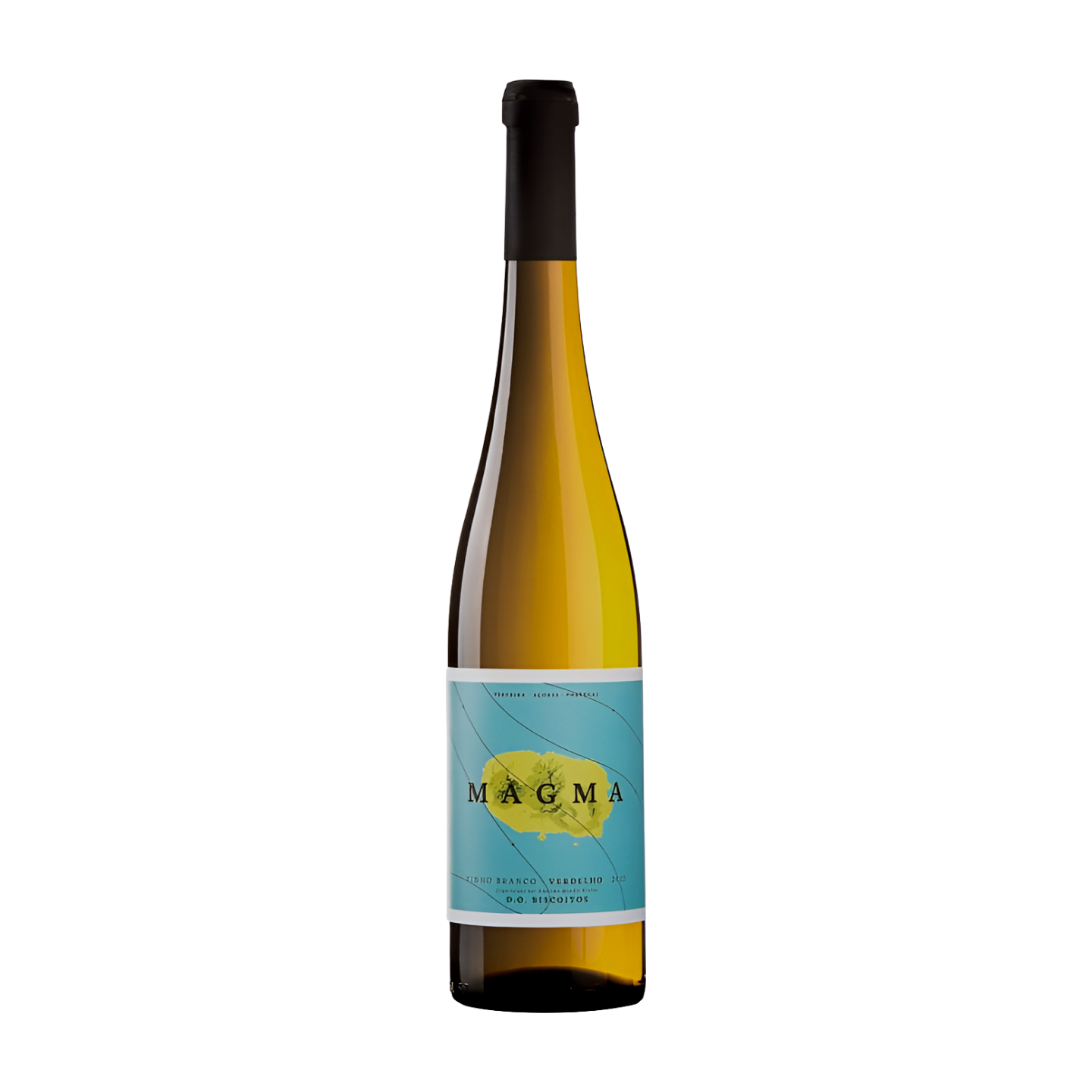
Anselmo Mendes Magma Verdelho 2023 – Biscoitos DOC
The Azores are a hidden gem in Portuguese wine, offering a unique blend of tradition and innovation. Whether you’re drawn to the storied fortified wines or the fresh appeal of their still wines, the Azores provide a distinctive taste of their volcanic and oceanic origins.
